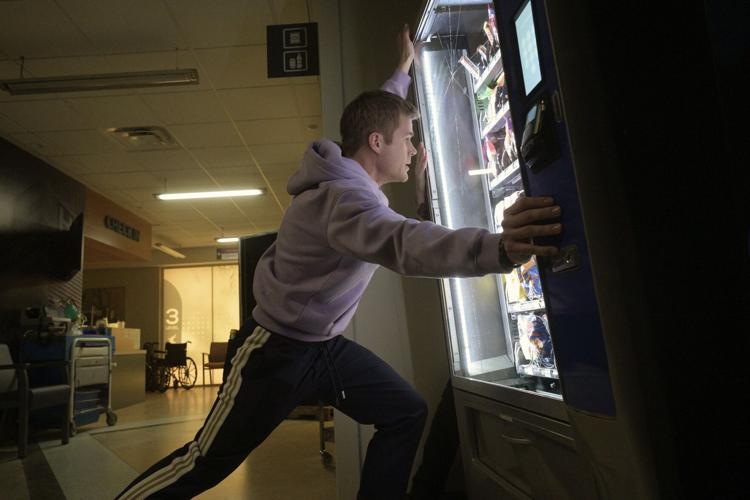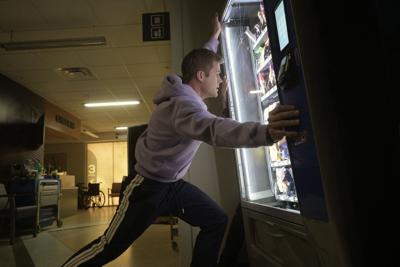ŌĆ£The fear of death,ŌĆØ Mark Twain said, ŌĆ£follows from the fear of life.ŌĆØ
One would like to think that a wry satirist like Twain would have appreciated the mordant wit of the ŌĆ£Final DestinationŌĆØ film series, which unfolds in a world whose inhabitants have good reason to be afraid, and which reigns supreme as the 21st centuryŌĆÖs sharpest studio-horror franchise. In a moment when skilful, po-faced auteurs seek to gentrify genre, the ŌĆ£Final DestinationŌĆØ movies are happy to slum it, threading existential dread through violent sight gags worthy of the Marquis de Sade ŌĆö or maybe Wile E. Coyote.
ItŌĆÖs been 14 years since ŌĆ£Final Destination 5,ŌĆØ which adeptly reconfigured the franchise into a figure eight, looping back to the timeline of the 2000 original for a twist ending that doubled as a homecoming. The latest instalment, ŌĆ£Final Destination Bloodlines,ŌĆØ is less concerned with continuity even as it doubles down on the metaphysical premise of its predecessors, which is that Death is as inventive as it is inevitable.
Accidents, as they say, will happen, but in the ŌĆ£Final DestinationŌĆØ films they tend to happen all the time, at home, on the road and in the darndest of places. There are no safe spaces in these movies, only abattoirs hidden in plain sight. Here, electric lawnmowers, kitchen garbage disposals and vending machines are fraught with portent; weathervanes get weaponized like the sword of Damocles; and tanning beds become deep fryers, serving up sorority sisters, extra crispy.
ŌĆ£We decided to make the world at large, in the service of death, our antagonist,ŌĆØ explained the first filmŌĆÖs director, James Wong, a key creative on ŌĆ£The X-Files,ŌĆØ who understood the potential of a slasher movie without a slasher. The marketing of ŌĆ£Final DestinationŌĆØ made it look like another slick, undistinguished thriller about expendable, skin-care-ad-looking teenagers, but the script, submitted to New Line Cinema by a fledgling screenwriter named Jeffrey Reddick, vibrated on its own frequency of ambient anxiety.
The first film features a bravura opening sequence in which a kid named Alex (Devon Sawa) has a vision that the plane ferrying his high school graduating class from New York to Paris is going to explode, and manages to wrangle a few pals back onto the tarmac before takeoff. An indelible image: a lingering close-up of the inch-wide gap between the jet bridge and the aircraft, suggesting not just the thin line between safety and peril, but a hairline fracture in reality itself.

Devon Sawa has a premonition in “Final Destination.”
Shane Harvey/New Line Cinema/APAlexŌĆÖs dream is a premonition, and heŌĆÖs duly ostracized by the families of his dead classmates, as well as by the survivors, who resent his junior-ŌĆ£Dead ZoneŌĆØ act. Until, that is, the latter cohort starts shrinking, one by one, victims of elaborate mishaps whose coincidental nature is the most suspicious thing about them. WongŌĆÖs staging of these lethal set pieces ŌĆö including a Hitchockian homage set in a shower ŌĆö flips the script in terms of audience response.
Rather than root for the characters to escape their fate, weŌĆÖre compelled to delight in the details of their deaths, like kids playing Mouse Trap. In making the mechanisms of horror cinema so explicit (in both senses of the world), the ŌĆ£Final DestinationŌĆØ creators were able to have their genre critique and eat it too ŌĆö a veritable smorgasbord of gore, with dead meat falling off the bone.
The ruling logic of sequels is that bigger equals better, and ŌĆ£Final Destination 2ŌĆØ honored the tradition by one-upping its predecessorŌĆÖs opening via a multicar highway pileup that still stands as one of the most hilariously terrifying sequences of its kind. The image of massive logs cascading off the back of a long haul truck and across several lanes of high-speed traffic is the sort of thing that stays lodged in oneŌĆÖs subconscious, especially if you happen to be driving cross-country.
Those tumbling logs get a welcome curtain call in ŌĆ£Bloodlines,ŌĆØ which features its share of memorable mutilations (youŌĆÖll never look at a garbage truck the same way again) but also generates a surprising amount of pathos.

Kevin (Ryan Merriman) and Wendy (Mary Elizabeth Winstead) learn that roller coasters are not always a fun time in “Final Destination 3.”
Shane Harvey/New Line/APThe film peaks during the ritualistic, expected cameo by Tony Todd as William Bludworth, the sinister mortician who recognizes and respects DeathŌĆÖs grand design. In the original ŌĆ£Final Destination,ŌĆØ Todd was arguably the biggest star in the cast, trading in on the icon status of ŌĆ£CandymanŌĆØ; over time, he became something like the franchise mascot.
Last November, the beloved actor died of stomach cancer at the age of 69, but only after completing his work on ŌĆ£Bloodlines.ŌĆØ His gaunt, skeletal appearance pressurizes the filmŌĆÖs themes of mortality, but his sweetly menacing presence is like a release valve, culminating in a wonderful monologue about the importance of enjoying oneŌĆÖs life down to the second.
ItŌĆÖs a sweet farewell to a legend in a movie that happily lives up to its own glorious morbid legacy.

































To join the conversation set a first and last name in your user profile.
Sign in or register for free to join the Conversation